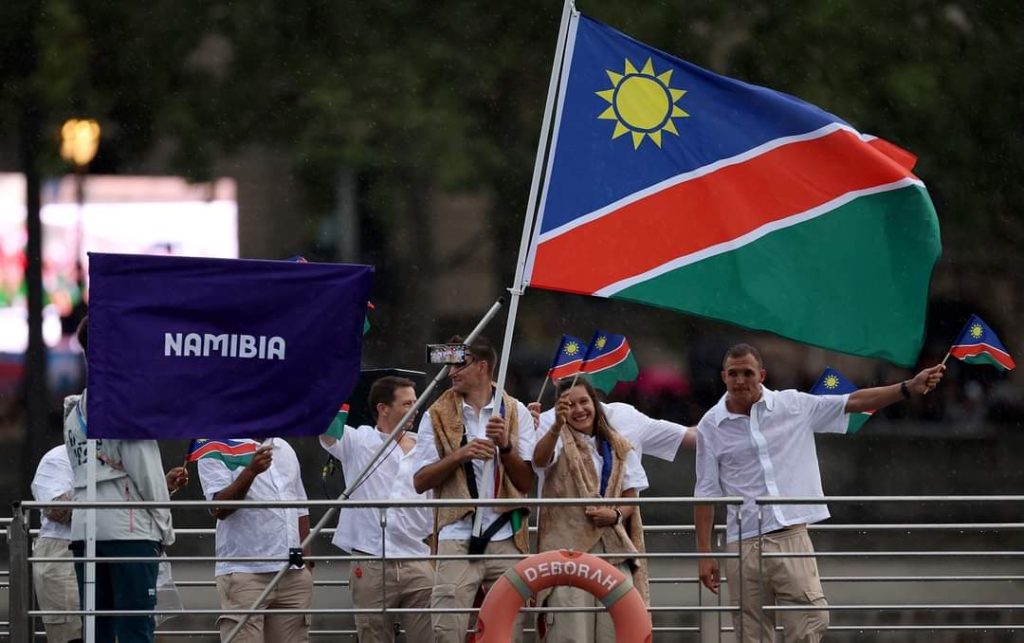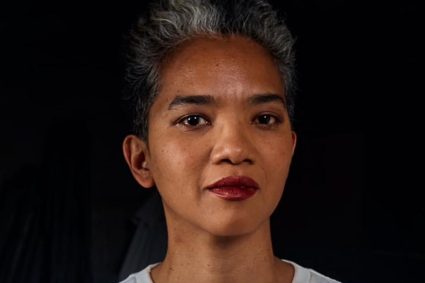
Botswana showcased their pride with blue Shweshwe fabric, known for its small geometric patterns, on a unique floating ramp. The fabric choice and design highlighted Botswana’s cultural heritage and contemporary fashion sense. The blue color represents rain, which is a precious resource in the country. On a lighter side of social media, many thought it looked like a wedding party dress.
Namibia collaborated with the renowned fashion brand Yves Salomon to promote their unique Swakara pelts, known for their softness and curly patterns, in stunning sand-colored hues. This luxurious material added an element of elegance and sophistication to the Namibian team’s appearance. The sand color reflects the Namib Desert, an integral part of Namibia’s identity.
Zimbabwe’s outfits were designed by Pfeka, a brand owned by Eglet Mtengwa Nyabvure. Using the Masvingo fabric inspired by Great Zimbabwe, the athletes wore white-cream blazers with chevron patterns and faint prints of stone masonry, featuring the symbolic Zimbabwe bird, Hungwe. The green pants represented vegetation and prosperity, symbolizing hope for the athletes. This thoughtful design seamlessly blended historical elements with contemporary fashion, making a powerful statement.



Many African countries’ Olympic committees collaborated with local brands to tell their stories through these unique and culturally rich kits. The fabrics used were predominantly African products, showcasing the continent’s rich heritage and craftsmanship. Notably, Kenyan brains behind Enda Sports Wear designed kits for Gabon, Comoros, and Djibouti, further highlighting Africa’s contribution to the global stage.
The outfits worn by African athletes at the 2024 Olympics were not only a testament to the continent’s rich cultural heritage but also to the creativity and ingenuity of its designers. The use of local fabrics and traditional patterns in modern sportswear underscored a commitment to sustainability and cultural pride. These ensembles were more than just uniforms; they were statements of identity, resilience, and unity. Each country’s choice of design elements told a story, celebrating both their unique heritage and their shared African identity. The fashion at this year’s opening ceremony truly highlighted the continent’s ability to blend tradition with contemporary style, making a significant impression on the global stage.


